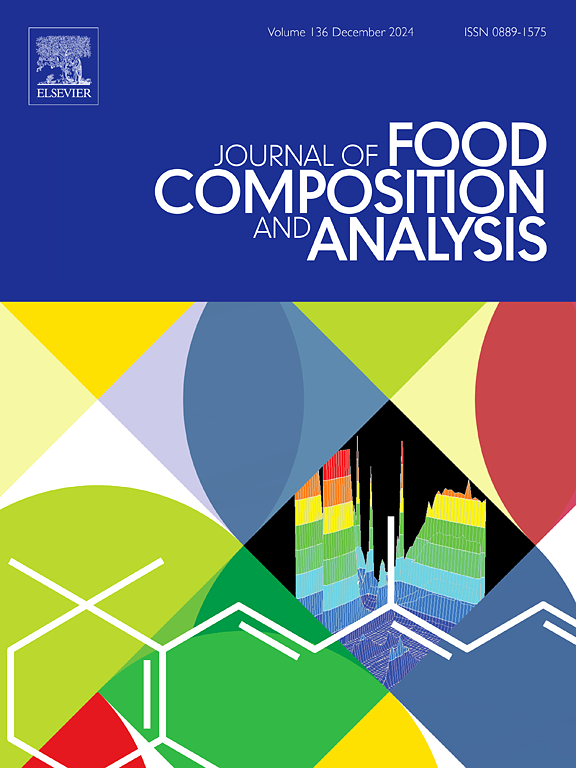Trace copper determination in mate tea and tap water using FAAS and spray-assisted liquid phase microextraction
IF 4
2区 农林科学
Q2 CHEMISTRY, APPLIED
引用次数: 0
Abstract
In the present study, a rapid, efficient and environmentally friendly analytical approach was proposed for the determination of trace copper by flame atomic absorption spectrometry (FAAS) after spray-assisted fine droplet formation based liquid phase microextraction (SFDF-LPME), which eliminates the use of dispersing solvents. With the help of a simple nozzle apparatus, an efficient distribution of the extraction solvent into the sample was achieved. The developed SFDF-LPME-FAAS method achieved a limit of detection (LOD) of 1.6 µg L−1 and a limit of quantification (LOQ) of 5.2 µg L−1 under optimal conditions. A wide linear range was recorded with a regression coefficient (R2) of 0.9987 between 5.0 and 100 µg L−1. The improvement in sensitivity was found to be 57.4-fold by comparing the slopes of the calibration plot equation of FAAS and SFDF-LPME-FAAS systems. The feasibility of the SFDF-LPME-FAAS method was evaluated by recovery studies using mate tea extracts and tap water samples. The good recovery results obtained for tap water samples and mate tea extracts in the range of 81.1 % - 113.8 % and 85.5 % - 120.8 %, respectively, showed that the method is applicable to similar matrices.
求助全文
约1分钟内获得全文
求助全文
来源期刊

Journal of Food Composition and Analysis
工程技术-食品科技
CiteScore
6.20
自引率
11.60%
发文量
601
审稿时长
53 days
期刊介绍:
The Journal of Food Composition and Analysis publishes manuscripts on scientific aspects of data on the chemical composition of human foods, with particular emphasis on actual data on composition of foods; analytical methods; studies on the manipulation, storage, distribution and use of food composition data; and studies on the statistics, use and distribution of such data and data systems. The Journal''s basis is nutrient composition, with increasing emphasis on bioactive non-nutrient and anti-nutrient components. Papers must provide sufficient description of the food samples, analytical methods, quality control procedures and statistical treatments of the data to permit the end users of the food composition data to evaluate the appropriateness of such data in their projects.
The Journal does not publish papers on: microbiological compounds; sensory quality; aromatics/volatiles in food and wine; essential oils; organoleptic characteristics of food; physical properties; or clinical papers and pharmacology-related papers.
 求助内容:
求助内容: 应助结果提醒方式:
应助结果提醒方式:


